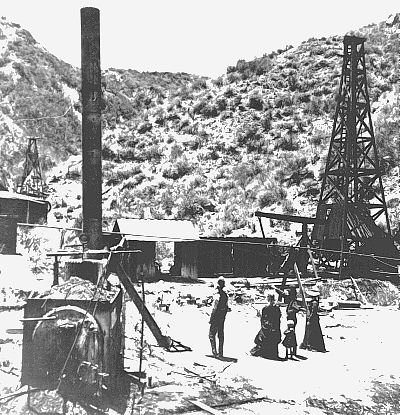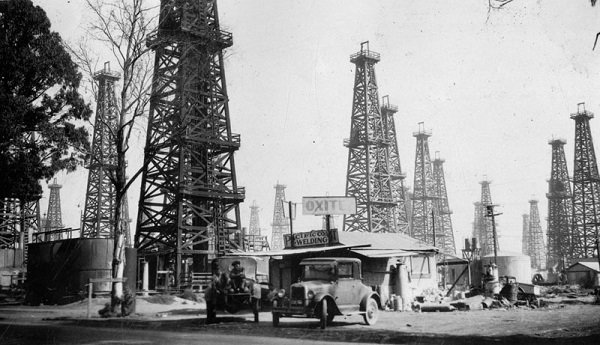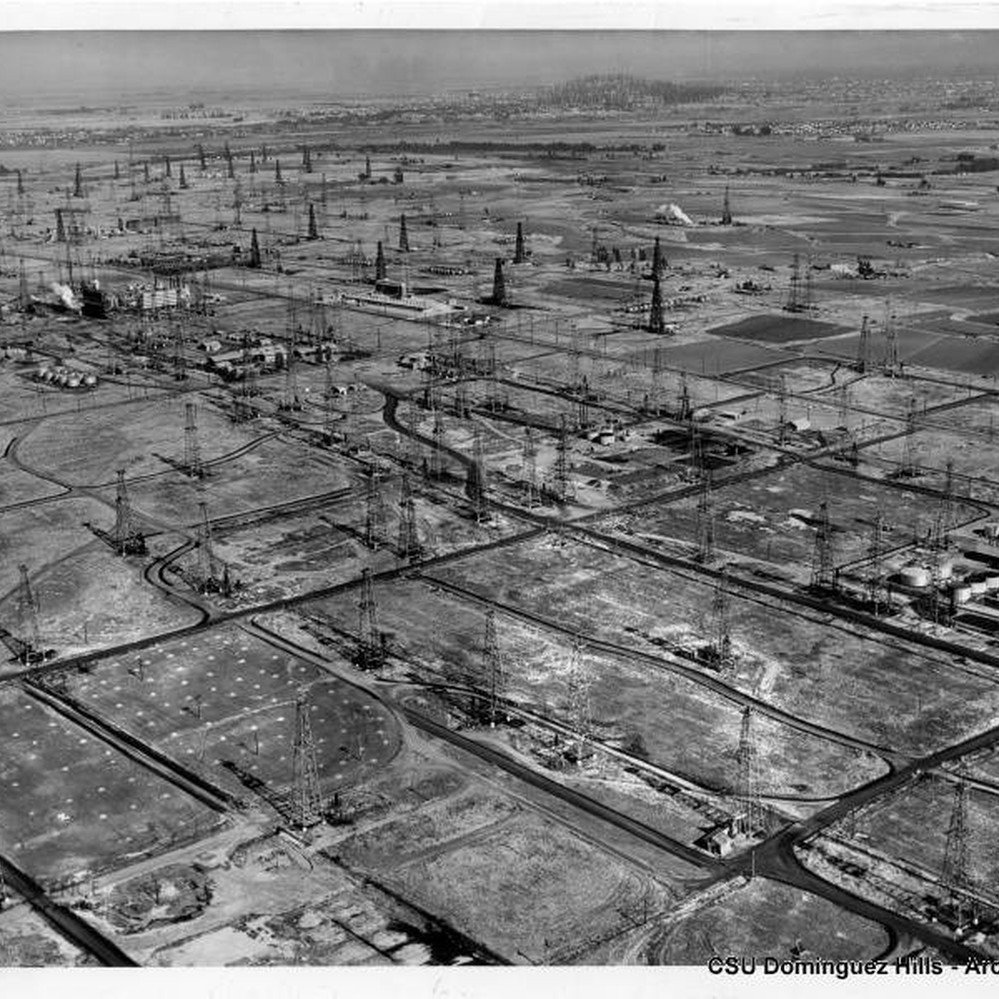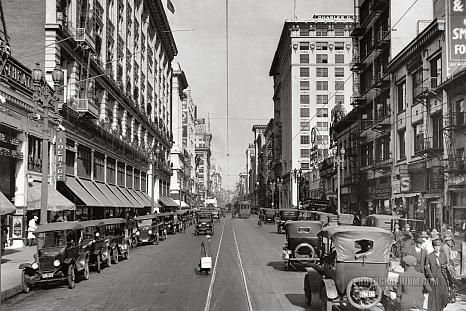A Selected Timeline of the
History of Oil in Los Angeles
In the 1860s, oil drilling began in California. By 1894, there were 80 wells in LA—which was then a city of 50,000 people; the number of wells increased to 500 in 1897. By 1903, California was the leading oil-producing state in the country. This oil boom continued and by 1930, with a population of 1.2 million, California was producing nearly one-quarter of the world's oil output.
Today, Los Angeles remains the largest urban oil field in the United States, with thousands of active and inactive wells. Many are in neighborhoods adjacent to playgrounds, schools, and homes.
At the beginning of the oil boom, little attention was paid to the health and environmental risks associated with oil extraction and refining: thus, many wells were drilled in residential areas and local beaches. Pumpjacks can be found in people’s backyards, hidden behind fences, or even disguised as buildings. The proximity of oil sites to residences creates chronic health problems, and environmental activists have lobbied for buffer zones between these sites and homes to protect our communities.
In 2023, Senate Bill 1137 was passed; it required a 3200-foot buffer zone for new oil wells, but the legislation is on hold after industry pushback.
The question will go to the voters in November 2024.
Pre-Colonization
Indigenous Americans, including the Ventureño, Gabrieleño-Tongva, Fernandeño, harvested oil from deposits seeping out of the ground and used it as a lubricant and sealant to repair canoes
1500s
Spanish conquistadors used the tarry oil to repair ships and seal roofs
1866
Thomas Bard and Josiah Stanford began oil production in Ojai, just north of Los Angeles
1876
The Star Oil Works struck oil at Pico Canyon in the San Fernando Mountains
1883
Pacific Coast Oil Company (which became Standard Oil) bought out the Pico Canyon company
1892
Edward Doheny discovered oil under a private residence in the Los Angeles City Oil Field, setting off an oil drilling frenzy
(Image shows Doheny visiting his discovery site in 1930)
1894
About 80 wells were producing oil in Los Angeles, population 50,000
1897
More than 500 wells were producing oil in Los Angeles, population 500,000
1917-1925
The Los Angeles oil boom yielded a series of large oil field discoveries
1920
Oil discovered in Huntington Beach
1921
Oil discovered on Signal Hall in Long Beach and Santa Fe Springs
1923
Oil discovered in Dominguez Hills
1924
Oil discovered in Inglewood
1920-1930
Population of Los Angeles doubled from 600,000 to 1.2 million
1930s
Los Angeles generated about 25 percent of the world’s oil
2023
There are 20,000 active or abandoned oil wells spread across Los Angeles County, population 10 million
















